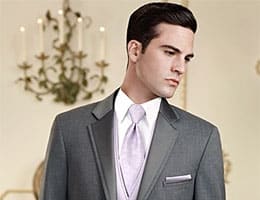 The etymology of tie refers to an old Italian word that referred to Croatian nationality . Several centuries ago, Croatian horsemen used to wear a black scarf tied around their necks . Over time, a wardrobe accessory that is usually simply composed of an elongated band that is tied or knotted around the neck became known as a tie.
The etymology of tie refers to an old Italian word that referred to Croatian nationality . Several centuries ago, Croatian horsemen used to wear a black scarf tied around their necks . Over time, a wardrobe accessory that is usually simply composed of an elongated band that is tied or knotted around the neck became known as a tie.
Ties, therefore, are usually strips of silk, cotton or other fabric that fall over the chest. It is an aesthetic accessory that is used on the shirt to hide its buttons.
The characteristics and uses of ties have varied throughout history . Currently they are used mainly by men when they wear a shirt and jacket . Ties are worn in formal contexts: in a company, at a wedding, at a court hearing, etc.
In order for the tie to hang over the chest, it is necessary to adjust it to the neck with a knot, after making a loop into which the head is "inserted." The knot is tied in the throat area and allows the tie to be adjusted and loosened, making the tie longer or shorter, respectively.
When the person wants his tie to stay straight and not move, he can appeal to a tie pin . This accessory allows you to fix the band to the shirt. Other items used for a similar purpose are the tie chain and the tie pin .
The ribbon that is tied symmetrically around the neck, forming two bows with opposite ends, is called a bow tie , bow tie , bow tie or bow tie .
There are currently many companies that allow their employees to wear less structured clothing , leaving behind the requirement of " coat and tie" to allow for greater variety and, why not?, comfort. There is more than one reason to modernize the work uniform, and one of them is related to productivity: the suit limits the person's mobility and makes them too hot .
 If, for example, we are located in countries where the climate is characterized by long periods of heat and mild winters, thinking about wearing a suit all year round is truly terrifying. We cannot expect a person to perform adequately in their office if the temperature on the other side of the window is around 40°C; Furthermore, if to do so you must submit to confinement and the use of air conditioning, the conditions are dangerously far from a natural environment.
If, for example, we are located in countries where the climate is characterized by long periods of heat and mild winters, thinking about wearing a suit all year round is truly terrifying. We cannot expect a person to perform adequately in their office if the temperature on the other side of the window is around 40°C; Furthermore, if to do so you must submit to confinement and the use of air conditioning, the conditions are dangerously far from a natural environment.
The tie, therefore, can be a symbol of archaic structure, of apparent formality and seriousness , although behind the physical appearance there are a series of problems that threaten the proper functioning of a company. If workers have the freedom to choose their own clothing, they are likely to feel better and be able to function more freely in the office, both physically and emotionally.
On the other hand, the tie is also associated with machismo , since it is one of the elements that Western society uses to distinguish men from women. Since ties are not usually worn by lower-class people, it is assumed that a man wearing a tie has a certain amount of power, and that he can exercise it over men in lower positions as well as women.
Pursuing change to end machismo should not be about all female executives complementing their uniform with a tie, but about breaking down these rigid symbols of hierarchy and power, to blur differences and focus on what makes us all equal.
